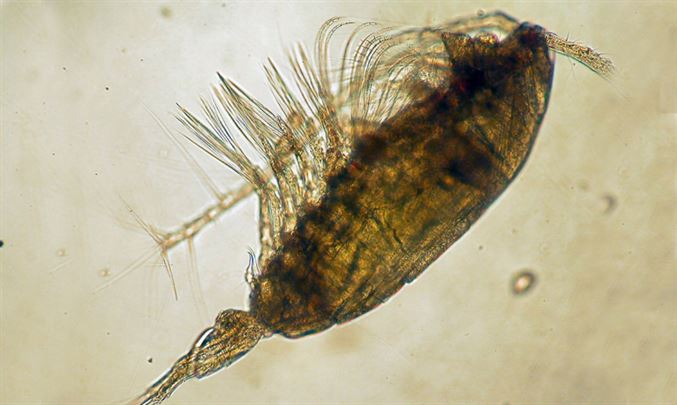The anatomy of Acartia hudsonica undergoes significant changes throughout its life cycle. In its nauplius (larval) stage, it has a head and a tail but lacks a well-defined abdominal region. However, after six molting stages, the nauplius transforms into a copepodite, which now possesses a distinct abdomen. Subsequently, through six more molting stages, the copepodite reaches a stage of development where it can be recognized as an adult copepod.
Adult Acartia hudsonica copepods are typically quite small, measuring less than 1 millimeter in length. Their bodies are divided into three primary sections:
1. The head, known as the cephalosome, is centered around a single eye and is equipped with two pairs of antennae, one of which is long, and the other is short.
2. The abdomen, referred to as the metasome, becomes a clearly distinguishable region in the adult stage.
3. The tail, or urosome, forms another distinctive section of their body.
Beneath the abdomen, copepods have five pairs of swimming legs, which are essential for their locomotion and survival. Notably, a distinct feature that sets A. hudsonica apart from other Acartia species is the presence of blue lines on the anterior part of their abdomen. These anatomical characteristics are crucial for identifying and classifying this particular copepod species.
